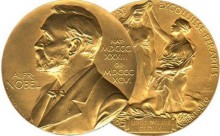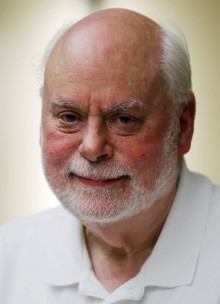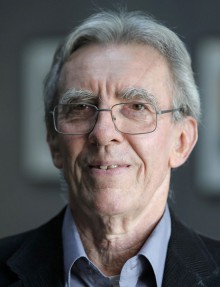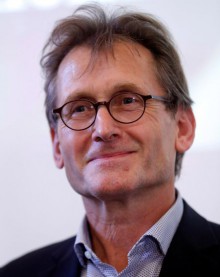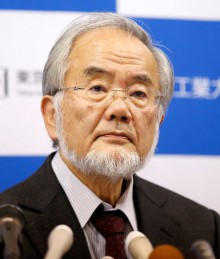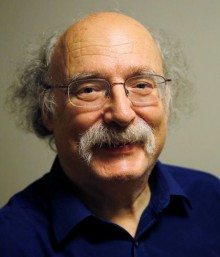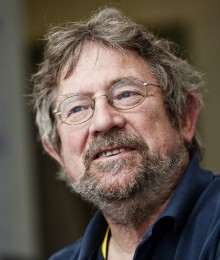This year, three British researchers – David J. Thouless, professor emeritus at the University of Washington, Professor F. Duncan M. Haldane of Princeton University, and Professor J. Michael Kosterlitz of Brown University – share the Nobel Prize in Physics for “theoretical discoveries of topological phase transitions and topological phases of matter.” Their studies relate to theoretical physics, specifically to Berezinskii-Kosterlitz-Thouless phase transition in the two-dimensional (2D) XY model.
Japan-born scientist, Yoshinori Ohsumi, was conferred the Nobel Prize in Physiology or Medicine for his discoveries of mechanisms for autophagy, or “self-eating,” in which cells take unneeded or damaged material, including entire organelles, and where mutations are linked to diseases such as cancer and neurological disorders like Parkinson’s disease.
Yoshinori Ohsumi was born 1945 in Fukuoka, Japan. He received a Ph.D. from University of Tokyo in 1974. After spending three years at Rockefeller University, he returned to the University of Tokyo where he established his research group in 1988. Since 2009, he has been a professor with the Tokyo Institute of Technology.
Jean-Pierre Sauvage, professor emeritus at the University of Strasbourg; Sir J. Fraser Stoddart, Dpt. of Chemistry, Northwestern University (US); Dr. Bernard L. Feringa, University of Groningen (Netherlands) were jointly awarded the Nobel Prize in Chemistry “for the design and synthesis of molecular machines.” They developed the world’s smallest machines by linking together molecules into a unit that, when added energy, could do some kind of work. These machines, a thousand times thinner than a strand of hair, included a tiny lift, mini motors, and artificial muscles. By miniaturizing machines, these Nobel Laureates have “taken chemistry to a new dimension,” reads a Nobel Prize statement.
PHASE TRANSITIONS, A STEP TOWARD QUANTUM COMPUTERS
The three physics prize winners worked out a universal method that allows to describe, in general terms, a bizarre world where matter can take on different, and strange, states. Using advanced mathematics, they examined weird states of matter, such as superfluids, or substances that behave like liquids but have zero viscosity or resistance to flow. In superfluids, there is no friction impeding the liquid’s flow and so its particles act as one super particle. Other exotic states of matter include thin magnetic films and superconductors. Some examples of the odd behavior of these states of matter include: superfluid vortexes that continue to spin without slowing down, forever, and when electrical current flows, with no resistance, through a superconductor. On the quantum level, these systems can be described topologically, regardless of the material. Hence the notion of 2D superconductors.
Topology is a well-defined branch of mathematics that started being developed in the early 20th century [but some isolated results can be traced back several centuries. – Ed.], primarily thanks to the noted French mathematician, Henri Poincare. Polish mathematician Dr. Kazimierz Kuratowski (professor at Lviv Polytechnic, 1927-33) made a tangible contribution to the research.
Topology (from the Greek toppos – “place” – and logos – “study”) is concerned with the properties of space that are preserved under continuous deformations, such as stretching and bending, but not tearing or gluing. Conventional geometry practically ignores deformations, regarding them as various shapes. Topology has no use for an object’s metric properties, just as it has no room for such geometrical notions as distance, size, etc. In topology, a torus is no different from a cup with a handle. Topology became a necessary means of describing the physical properties of various objects. Topology offers a sufficiently correct explanation of the quantum Hall effect. The latter is still extensively used in technology, especially in medical equipment. In the Nobel Laureates’ study, electric voltage appears in the conductor’s cross-section under direct current, in a magnetic field. The quantum effect is accompanied by the emergence of digital – discontinuous – conduction levels. In other words, conductivity is present on this level, but is absent on the other one.
This effect was first predicted by Soviet [Kyiv-born] physicist Vadim Berezinskii in the 1960s, when he described the properties of thin films of superfluid liquid helium and layered magnets. Unfortunately, the scientist died in Kyiv in 1980, aged 45.
He theoretically demonstrated that at low temperatures such systems produce vortex-antivortex pairs, and that their energy does not depend on the size of the material. As the temperature rises, the system exits the topological phase, with the superliquid helium turning into liquid without friction.
Interestingly, the mathematic description applied to both superliquid and superconducting 2D systems of a certain kind.
At the time, most physicists did not accept Berezinskii’s paper, considering the sophisticated terminology and the fact that it wasn’t entirely consistent. Kosterlitz and Thouless offered an explanation that was easier to comprehend, but the process would go down in history as the Berezinskii-Kosterlitz-Thouless phase transition. Progress in this branch of physics opened up horizons for the study and development of a new class of matter, topological insulators.
The Nobel Laureates’ research, concerning thin substances, topological phase transitions, including topological insulators, offers opportunities of developing supercomputers whose performance will not be affected by excessive heat due to electrical resistance losses. Last but not least, this trend leads to the development of initial elements for the ultimate quantum computer.
Everything proves interrelated in physics. The above phase effects would be used in thin graphene films that won two ex-Soviet researchers, Andre Geim and Konstantin Novoselov, the Nobel Prize in Physics in 2010, “for groundbreaking experiments regarding the two-dimensional material graphene.”
The 2015 Nobel Prize in Physics was awarded jointly to Takaaki Kajita and Arthur B. McDonald “for the discovery of neutrino oscillations, which shows that neutrinos have mass.”
CELL CONTENTS DISPOSAL
Modern silicon-crystal-based computers have reached the productivity limit. Medicine badly needs computers with a far better performance capacity for the treatment of ills affecting the human race, ranging from cardiovascular disorders to cancer to hepatitis to AIDS. Physics and electronics are about to make what may well prove the biggest computer breakthrough, placing a powerful tool in the hands of scientists, including biologists and physiologists.
Here explaining the cellular functioning mechanism came first. A difficult task that required the working out of new research methods.
Autophagy (from the Ancient Greek autophagos, meaning “self-devouring/eating”) is a natural process in the course of which the cell disassembles unnecessary or dysfunctional components, using acid medium cellular components. In the 1960s, it was noted that the cells were ridding themselves of unwelcome contents with the aid of sack-like vesicles. They contained ferments capable of “digesting” proteins, fats, and carbohydrates, and received the name of lysosome. Lysosome is what serves to “reutilize” and even eliminate the unwanted cellular components. In 1974, Belgian cytologist and biochemist Christian de Duve shared the Nobel Prize in Physiology or Medicine with Albert Claude and George E. Palade “for their discoveries concerning the structural and functional organization of the cell.” Autophagy is his coinage, dating back to 1963.
Autophagy is about “recycling” cellular components and transferring the “waste” to lysosomes, with the “bubbles” [double membranes formed around the organelles marked for destruction] being referred to as autophagosomes. This phenomenon remained to be studied at greater length for decades, until the Japanese researcher, Yoshinori Ohsumi, carried out a series of brilliant experiments in the early 1990s [using yeast and laboratory mammals], discovering that ATG genes are responsible for autophagy. He subsequently demonstrated that similar processes are taking place in the human cells.
Mr. Ohsumi’s research makes it clear that autophagy provides the “fuel” and “building material” for the rejuvenation of cellular components; that the cells are thus mobilizing their “inner reserve.” Autophagy serves to clear the cell of the damaged components, which is important for keeping the cell ticking. Using autophagy, the cell can meet the challenge of various kinds of stress, especially in terms of virus and bacteria. Autophagy helps the cell rid itself of them, just as it helps develop the embryo and differentiate the cellular functions.
Autophagy cleans the cell of damaged proteins, mitigating the negative effects of the aging process. Inadequate autophagy, on the other hand, is believed to help develop Parkinson’s disease, Type 2 Diabetes, and other old age ills. Autophagy is aimed at combating intracellular infectious agents, including TB.
Cancerous cells are known to be continuously dividing, thus giving an impetus to autophagy. This is normal for a normal cell, and a normal cell is all out to uphold this process. Therefore, it is important to find a way to stop this process for a cancerous cell, using inhibitors to suppress autophagy’s protective function in the cancerous cell. Here the number one problem is to “teach” the inhibitor to target the cancerous cell, without affecting the normal one. This is the key objective for the molecular oncology and biology communities.
Yoshinori Ohsumi was nominated for the 2013 Nobel Prize in Medicine, but the award went to James E. Rothman, Randy W. Schekman, and Thomas C. Suedhof “for their discoveries of machinery regulating vesicle traffic, a major transport system in our cells.”


